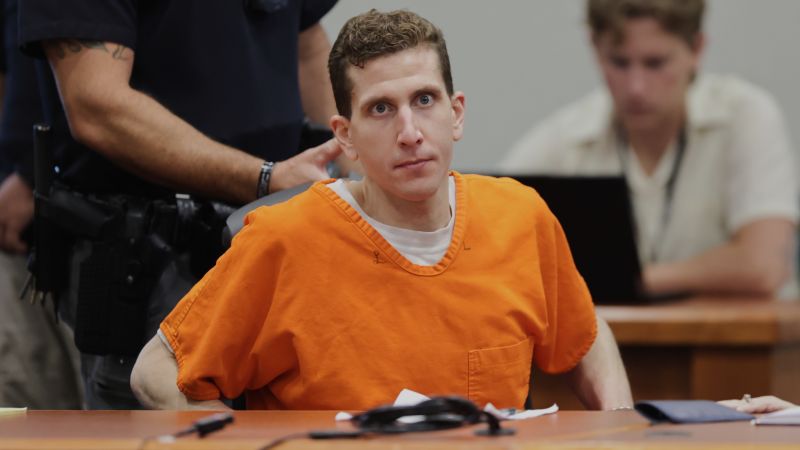Education
Bryan Kohberger Transferred to Solitary Confinement in Idaho

Bryan Kohberger, convicted for the 2022 murders of four University of Idaho students, has been transferred to solitary confinement at the Idaho Maximum Security Institution. This change in his housing status was reported by KTVB, a CNN affiliate, and confirmed by a spokesperson from the Idaho Department of Corrections (IDOC) on Thursday. Kohberger is now located in J Block, the facility’s section designated for long-term restrictive housing.
The Idaho Maximum Security Institution, situated approximately nine miles south of Boise, is the only maximum-security prison in Idaho. It holds some of the state’s most disruptive male inmates. Kohberger’s placement on J Block, which can accommodate up to 128 individuals, includes those in protective custody and on death row. His status is reflected on the IDOC’s official website, which lists him as an inmate in this facility.
Inmates in long-term restrictive housing, such as Kohberger, are confined to single-person cells. They are moved in restraints and allowed only one hour of outdoor recreation each day. Showers are permitted every other day. Kohberger was placed in solitary confinement shortly after receiving a life sentence without the possibility of parole in late July. He chose not to make a statement during his sentencing hearing, leaving many victims’ families still seeking answers regarding his motives.
The Idaho Maximum Security Institution has faced scrutiny over its treatment of inmates in solitary confinement. According to the Idaho Statesman, a significant protest occurred last year when 90 inmates engaged in a six-day hunger strike. They protested against delays in medical care, prolonged periods of isolation, and the conditions of “cages” used for outdoor time. Reports described these enclosures as large, chain-link metal boxes that were often unsanitary.
The IDOC responded to concerns about facility conditions, stating that the recreation enclosures are cleaned regularly and that inmates can request cleaning for their cells. Following the hunger strike, the department announced plans to enhance vocational and educational programs, religious services, and recreational activities for inmates. An IDOC representative emphasized, “Safety is our number one priority for everyone living and working in our facilities.”
Kohberger’s solitary confinement has also raised questions about the broader implications of the prison’s restrictive policies. Kevin Kempf, a former director of the IDOC, noted that inmates could be confined to their cells for up to 23 hours a day, receiving meals there and only allowed showers three times a week. In response to criticism, the corrections department has introduced a step-down program designed to transition inmates from solitary confinement to a more open environment, allowing for increased interaction with others.
The IDOC clarified that long-term restrictive housing is not intended as a disciplinary measure but as a housing assignment aimed at managing specific behaviors. As Kohberger begins this new chapter in his incarceration, the ongoing debate about the treatment of inmates in solitary confinement continues to capture public attention.
-

 Technology5 months ago
Technology5 months agoDiscover the Top 10 Calorie Counting Apps of 2025
-

 Technology3 weeks ago
Technology3 weeks agoOpenAI to Implement Age Verification for ChatGPT by December 2025
-

 Health3 months ago
Health3 months agoBella Hadid Shares Health Update After Treatment for Lyme Disease
-

 Health3 months ago
Health3 months agoAnalysts Project Stronger Growth for Apple’s iPhone 17 Lineup
-

 Health4 months ago
Health4 months agoErin Bates Shares Recovery Update Following Sepsis Complications
-

 Technology5 months ago
Technology5 months agoDiscover How to Reverse Image Search Using ChatGPT Effortlessly
-

 Technology3 months ago
Technology3 months agoElectric Moto Influencer Surronster Arrested in Tijuana
-

 Technology5 months ago
Technology5 months agoMeta Initiates $60B AI Data Center Expansion, Starting in Ohio
-

 Technology2 months ago
Technology2 months agoDiscover 2025’s Top GPUs for Exceptional 4K Gaming Performance
-

 Technology5 months ago
Technology5 months agoRecovering a Suspended TikTok Account: A Step-by-Step Guide
-

 Health5 months ago
Health5 months agoTested: Rab Firewall Mountain Jacket Survives Harsh Conditions
-

 Lifestyle5 months ago
Lifestyle5 months agoBelton Family Reunites After Daughter Survives Hill Country Floods





















